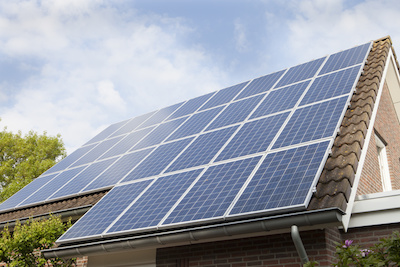When it comes to your home or small business solar, it just isn’t about the equipment alone.

Understanding how to get the most from that equipment can make a huge difference in the efficiency of the system while getting greater returns from your investment. Learning how to calculate your peak sun hours with home solar helps to ensure that your panels are positioned properly.
Understanding when and where the sun’s position is best for gathering sunlight has a significant advantage over depending upon general positioning.
How Much Energy Does The Sun Produce?
Our sun generates over 3.86 x 1026 watts of energy continuously. That staggering number is hard to comprehend (add 24 zeros to the number above), and while most of that energy is not directed towards our planet, 174 quadrillion watts does make it to us. Keep in mind, that potential is spread across the entire surface of the earth and that a specific location will move in and out of that light as the planet rotates, but it should be apparent that sunlight hours offer great energy potential!
Taking Advantage Of This Resource
When attempting to understand how much energy does the sun produce for your property, it is best to scale these numbers into something that can be used. On a cloudless day, each square meter of your property receives about 1 kilowatt of energy. That calculates to roughly 288 kilowatts throughout the day with an array of panels the size of a small swimming pool. On average, most American homes use 30 kilowatts an hour. It is easy to see why proper angle and facing is capable of generating excellent results.
Understanding Sunlight Hours
The numbers stated previously are in ideal conditions of course. Realistic numbers are based on a multitude of factors, including how many hours of daylight there are. This can change throughout the year as the earth’s axis changes position in relation to the sun. How many hours of daylight in winter your property receives will be different than the sun time energy it gets during the summer months.

Also, available suntime energy will be affected by your location within the country as each state averages more or less sunlight based on latitude on the earth’s surface. By understanding your position in relation to the sun, as well as how the available sunlight changes throughout the year, you can form a realistic expectation of how much energy your system is likely to take it.
How many hours of daylight in winter or summer aren’t the only seasonal considerations to think about. The sun’s position during those seasons can also influence its output when you calculate hours of potential energy. During winter months, when the sun is lower in the sky, less energy will be available than when its path is higher during hot summer days.
Determining Sunlight Solar Energy For Your Location
Hours of light
There are many online resources available that include a daylight hours chart for your area. Even the local weather report, that includes sunrise and sunset times, can suffice as a daylight hours chart if enough data points are collected. Knowing how many hours the sun is above the horizon is the first step in understanding your system’s potential.

While sources that list this information by state help, using a source that lists sun hours per day by zip code is more effective (solar panel angle by zip code can also be found on these sites). The more finite a resource can list how many hours of daylight you receive, the more accurate your calculations can be.
Peak hours
Another consideration when you calculate hours of potential energy is understanding peak sunlight hours. While the sun might be shining for nine hours a day, there are certain hours within that time period that produce the best potential energy. These are referred to as peak hours and are usually defined as an hour that offers 1,000 watts of potential power in a square meter. Peak hours occur when the sun is highest in the sky.
How many hours can you get when is the sun highest in the sky? Sunlight solar energy peaks average between three and five peak hours daily in the US. This will vary depending upon your location as well as with weather conditions. States like Arizona will receive more peak hours on average than a state like Maine, for example. Most of the resources you can use that list sun hours per day by zip code offer data for peak hours as well, or may even incorporate them into their calculations.
Using a solar irradiance calculator
There are solar irradiance calculator instruments and software suites are available that can determine the power each unit area receives. Not only can this be valuable for your general location, but they can also be used to further determine which areas within your property are best for maximum collection. Along with proper panel alignment, determining the best locations will improve your current or future system’s performance dramatically.
Providing the best panel angle
Besides asking “when is the sun highest in the sky?” you will need to determine the best angle that they should sit at. Again, many online resources are available to help determine the solar panel angle by zip code or by neighborhood. Optimum angles allow each cell within your system to receive the most light which allows them to match up well with their efficiency rating. Improper angles will lower their efficiency as potential sunlight will not meet the surface angle properly.

Remember to keep in mind your roof’s angle when determining panel angles, as the pitch of the roof will influence your final calculations if used as a panel location.
Providing the best panel facing
It is often assumed that the best facing for a solar panel is south for US residents when compared to other directions. That might not be the best way to approach placing your panels. While they might receive the most sunlight throughout the day when facing south, is the facing the best for collecting sunlight during peak hours? You might want to consider facing your panel’s in a way that matches the sun’s position during peak hours as this can capture more energy than a more generalized facing attempting to collect sunlight throughout the day.
How much sun do my solar panels need?
While there are no hard and fast rules for answering this question, many in the industry would consider it important for a location to receive at least four peak hours of sunlight daily as a minimum. This is for potential hours and not for actual hours at a location daily. With changes in sun angles during the seasons, as well as with the weather, this should be looked at as a guideline more than a hard and fast rule. While a panel can collect sunlight during cloudy days, it will be at a rate that is 25 to 40-percent less than during a full day of sun.
Final Thoughts
Taking the time to calculate peak hours will allow you to invest in the best possible system to meet your needs. It can also assist you in order to tweak a system you might have inherited with a new property. If the process seems a bit overwhelming, rest assured that professional assistance is available to help you.
